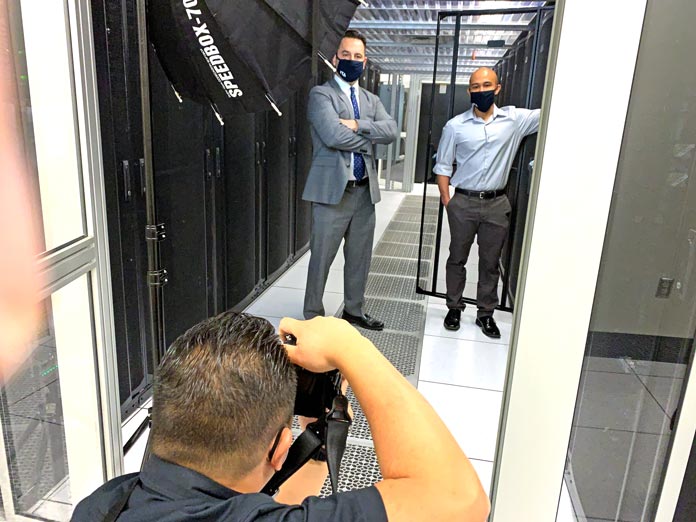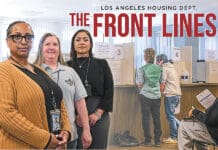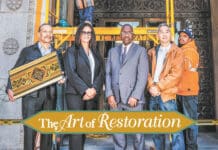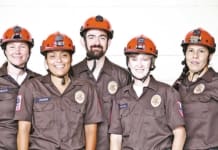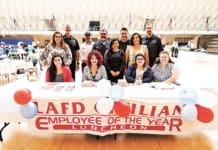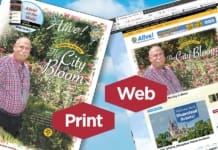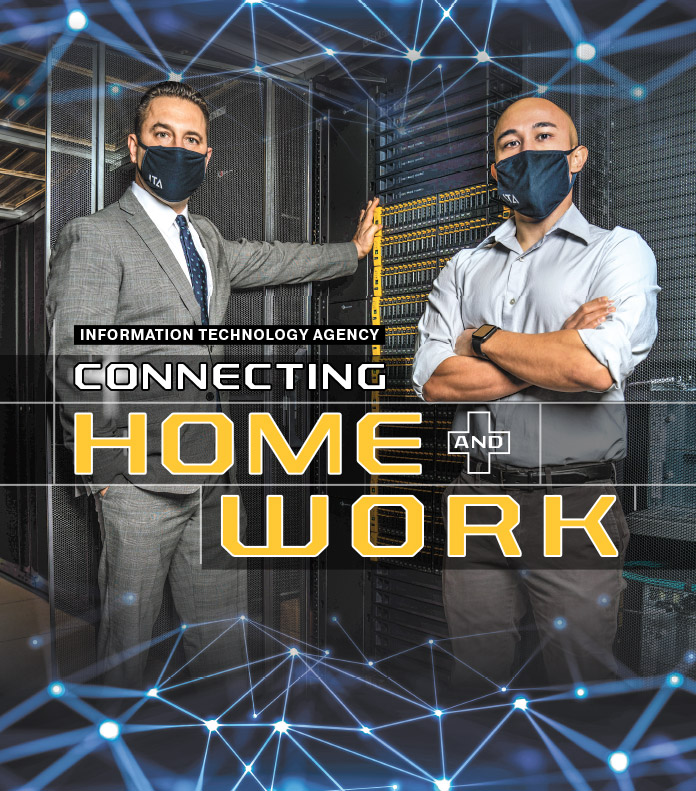
Photos by John Burnes, Alive! editor; Juan and
Veronica Guerra for Alive!; and courtesy the City of L
The ITA Connect2LACity Team
Meet the team that built the telework system that connected everyone working at home, and kept the City government functioning during COVID.
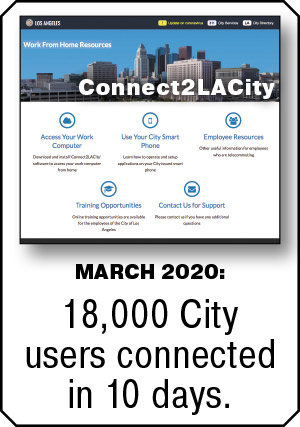 If you’re working from home for health and safety and keeping the LA City government running smoothly by teleworking – getting lots done by hopping on video conferences and connecting with your teams – you have the ITA Connect2LACity telecommute team to thank.
If you’re working from home for health and safety and keeping the LA City government running smoothly by teleworking – getting lots done by hopping on video conferences and connecting with your teams – you have the ITA Connect2LACity telecommute team to thank.
In March 2020, as the pandemic was taking hold, the team built a platform in just 10 days to handle the current 18,000 City users.Supporting core City services with employees working from home was a daunting task. The team quickly formed a collaboration across security, network, application, Web and media, and administration teams. The group worked with 42 City departments to implement the Connect2LACity telecommuting platform and Web portal.
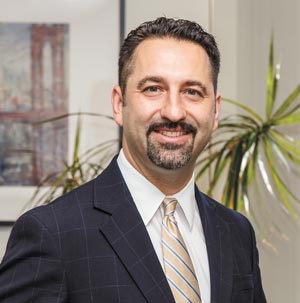
Telecommuting can be a challenging work arrangement – learning how to do one’s work via virtual interactions including email, chat or video meetings, employees can soon feel disconnected from their work teams and the work itself, with negative effects on both productivity and employee well-being. The Connect2LACity Team is providing more than just the telework platform – it also supports a good user experience with tips, tricks, and tools on the www.Connect2LACity.org website.
Preparation and the Future
“At the beginning of March 2020, I started hearing from the (federal) CDC that it was not a matter of if, but when COVID-19 came to the United States,” recalled ITA General Manager Ted Ross, Club Member. “Immediately, I called together a Teleworking Task Force of ITA staff in the security, network, identity management, and computer support areas. We asked ourselves: How can we prepare for the possibility of more than 15,000 teleworking City employees in a matter of weeks? Up to that time, the City of Los Angeles had fewer than 35 teleworkers (mostly in the ITA 311 Call Center) and no solution to support this type of mass exodus to telework. We quickly identified the types of City employees who will need to telework and the capabilities they would need from home. Then, we found a robust, full featured technology solution from an existing ITA platform, built it up from scratch, and tested it on a small team of ITA staff who we sent home (i.e. you must work from home using this tool to make sure it works for others).
“We learned a lot in those short 10 days and made many adjustments in the software. On March 19, Mayor Eric Garcetti published the Safer from Home directive. Within 48 hours, we had more than 10,000 City employees setup in our teleworking platform we call Connect2LACity. Within two weeks, we had more than 18,000 City employees safely and securely connected from home so we could keep the City of Los Angeles serving LA’s residents when they needed it most.”
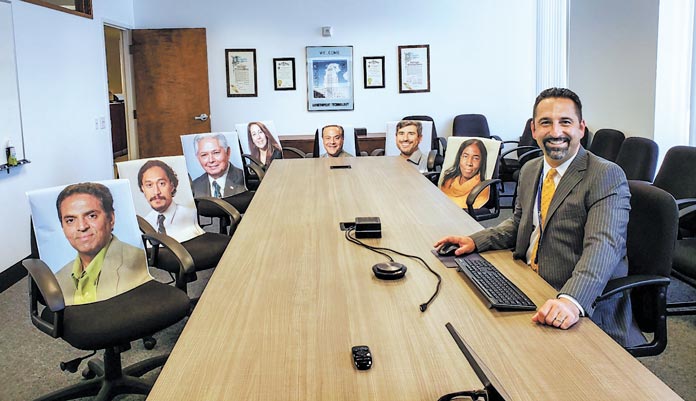
What has the team learned?
“As you can imagine, we have learned a lot about emergency response and digital transformation during COVID-19,” Ted continued. “We now have the ITA Emergency Playbook, which includes detailed plans for establishing our Department Operations Center (to support the City’s Emergency Operations Center). In addition, we continue to focus our IT investments and staffing on technology platforms that improve the digital, contactless capabilities of City employees and their departments. Whether it is a pandemic, an earthquake, or a terrorist attack, we want City departments to be effective and electronically capable of performing their mission when Angelenos need them most.”
The Club thanks Maryam Abbassi, Marina Sanchez and Ryan Norwall for their assistance in producing this feature.

The team that built the ITA Connect2LACity platform and learning tools includes:
Joyce Edson, Executive Officer
Timothy Lee, Chief Information Security Officer
Ryan Norwall, Information Systems Manager
Kim Amancio
Nima Asgari
Balmore Botero
Nicholas Chau
Kevin Cheng
Phillip Han
John Hawkins
Jaime Hernandez
Jayson Joseph
Jess Kapik Chong
Ly Lam
Tony Le
Andy Lam
Christopher Lastra
Daniel Clark Lee
Eric Lee
Marc Magallanes
Timothy Margono
Gian Maslog
Tuan Ngo
Anne Phu
Jeoffrey Regino
David Rhodes
Asiri Siriwardenage
Jeremy Stout
Rick Tang
Sherri Teng
Anne Tou
Alan Tran
Robert Villarreal
Binh Vuoung
Jaylen Wimbish
Alfredo Zanchez
Eduardo Magos
Felix Zhang

Meet the teams that built Connect2LACity:
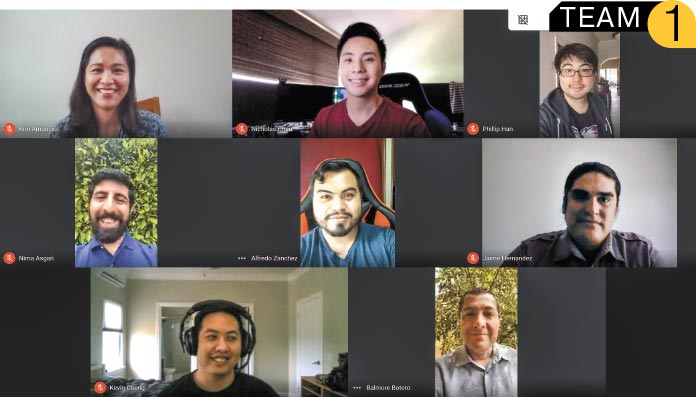
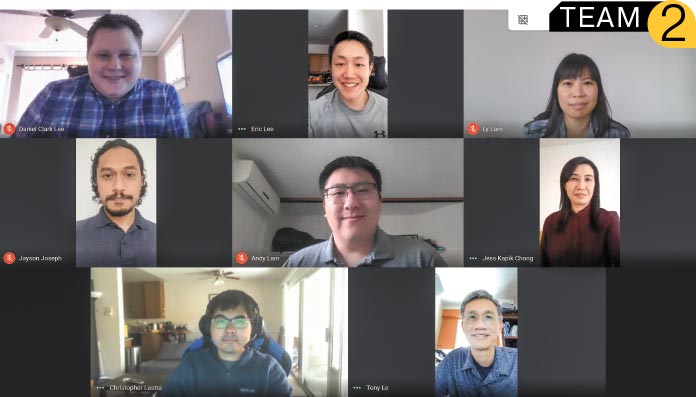
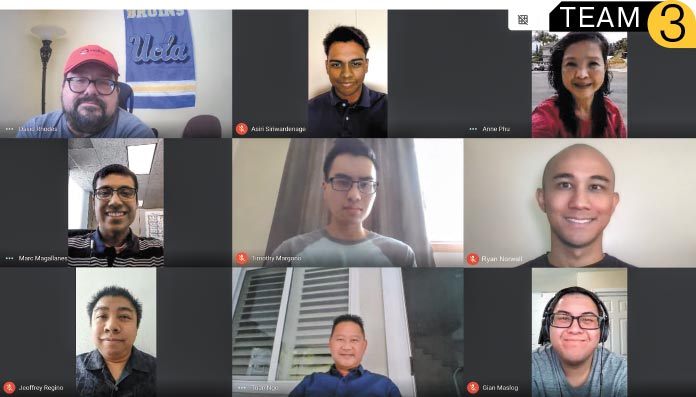
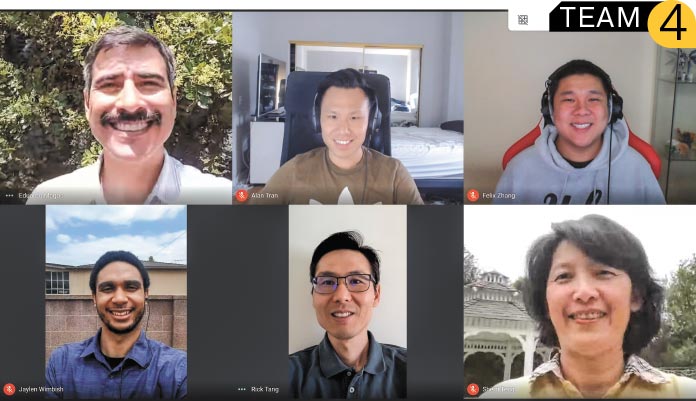
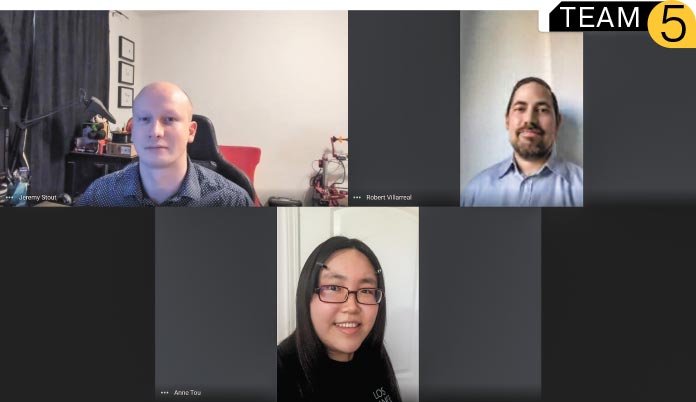

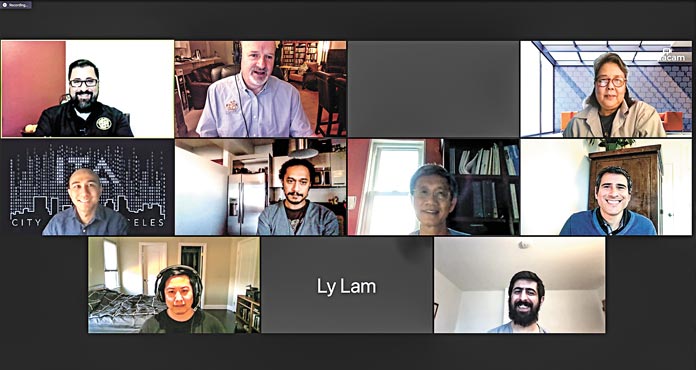
Up and Running
On Feb. 4, Club COO Robert Larios and Alive! editor John Burnes interviewed selected members of the team that built the ITA Connect2LACity telework platform and learning tools. The interviewees included Joyce Edson, Executive Officer/Assistant General Manager, 35 years of City service; Ryan Norwall, Information Systems Manager, 14 years, Club Member; Kevin Cheng, Systems Programmer, 5 years; Nima Asgari, Programmer Analyst V, 4 years; Tony Le, System Programmer, 20 years; Jayson Joseph, Information Systems Manager, 20 years; Ly Lam, System Programmer, 20 years; Eduardo Magos, Information Systems Manager, 20 years; and Tuan Ngo, Sr. Systems Analyst II, 20 years. The interview took place via teleconference due to COVID-19 protocols.
Alive!: Thanks to all of you for coming online – appropriately enough – to speak to our Alive! readers about the telework project you built last year. First, though, each of you – tell us the path you took to get to your current position.
 Kevin Cheng: I’ve been working day one out of high school since I was 18. Initially I worked in warehousing near City of Industry. There’s a lot of System Integrators who build servers out there. I went to school at Cal State Fullerton, and did a Computer Science degree. Then I graduated during the recession, right. I was originally looking for a job in NorCal but then all of the sudden the City called me. I got in as an Applications Programmer at ITA. I did one year and then I wanted to stay around but they didn’t have the position available. So I went to Building and Safety and I told ITA that I’d like to come back. And then I came back as a Systems Programmer.
Kevin Cheng: I’ve been working day one out of high school since I was 18. Initially I worked in warehousing near City of Industry. There’s a lot of System Integrators who build servers out there. I went to school at Cal State Fullerton, and did a Computer Science degree. Then I graduated during the recession, right. I was originally looking for a job in NorCal but then all of the sudden the City called me. I got in as an Applications Programmer at ITA. I did one year and then I wanted to stay around but they didn’t have the position available. So I went to Building and Safety and I told ITA that I’d like to come back. And then I came back as a Systems Programmer.
Nima Asgari: I started four years ago with ITA as an Applications Programmer Trainee. That was under the Document Management Group. From there the Forms Group was folded in and I became the Technical Lead for both groups. And after that, I was promoted to Programmer Analyst and then my subsequent position as one of the leads in charge of the Identity Management Team.
Eduardo Magos: I started my City career with the Bureau of Street Services as a Developer. I’ve been primarily developing applications or managing development teams throughout my career and have specialized in case management and work management systems. I’ve been involved in the 311 system for many, many years, which today is called MyLA311, and a lot of other kind of app development for the City, both public facing and internal.
Jayson Joseph: I started as a student intern through Cal State LA in 2001. It was supposed to be a two-year internship and close to 20 years later I’m still here. I love the City and I love IT, and this allows me to do both.
Ly Lam: I started with ITA 20 years ago. I came in straight from college and was on the City Council and CLA Support Desktop. And then I went to Documentum. So now I circle back to ITA Desktop Support Internal, becoming the Supervisor for that area.
Tuan Ngo: I started as a Student Professional Worker for ITA initially. As soon as I graduated from college I took the exam and got the promotion to City Clerk as a Systems Analyst. I worked there for a year and then opportunities arose when I was promoted back into ITA. Back then it was called Internal Support Services but as the group evolved we became Desktop Support. From there I started being promoted within the ranks to where I am right now managing Desktop Support services.
Joyce Edson: I started out in the City as a Jr. Administrative Assistant, a classification that no longer exists. My first assignment was to take a PC, which were just starting to come into the City, and automate a series of time cards for the Bureau of Contract Administration. I got the IT bug and then I moved into the Systems track. I’ve worked for Sanitation, Fire, Police and ITA, all in the IT track until I was promoted up into an AGM, an XO slot.
Ryan Norwall: I also started my career with the City as a Student Professional Worker while I was going to college at Cal Poly Pomona. Over the last 14 years I’ve had quite a few different roles all within ITA. I started with Desktop Support, supporting the elected officials, before moving on to the infrastructure side with Active Directory, servers, and also the firewall. At the time of this project, I was managing our cybersecurity operations, and now, I manage ITA’s Citywide Help Desk.
And finally Tony.
Tony Le: Out of college, I actually did not start with the City like all the folks here. I started with McDonnell Douglass Aerospace in Orange County. I worked there for several years. There was a downturn in aerospace, and I joined the City. With some computer experience, I got in as an Systems Programmer. I originally started in supporting the Emergency Operations and basically supported Networking Infrastructure Group, and now I’m supporting Networking Infrastructure and Identity Management as well.
 Teleworking Before COVID
Teleworking Before COVID
Tell me what the City’s capacity for telework was like before you substantially rebuilt it.
Ryan Norwall: Even prior to COVID, we had a couple of projects in terms of teleworking. Our 311 Call Center already had many agents starting the work-from-home program. As part of supporting that program, we had the ITA’s Mobile Worker Program, which replaced all the City desk lines with City cell phones through cellular providers.
Joyce Edson: The original remote access to the City network was part of the Emergency Operations Dept. Tony actually was one of the first people who worked on that. It was limited. At the time we were ahead of our time. That was really the start of it and then we expanded it out for a lot of the elected officials because they are out in the field more than most.
Did you have any emergency plans built up, or were you involved in Emergency Management’s guidebook?
Joyce Edson: One of the things I did when I first came to ITA was support Emergency Management. All departments participate in playbooks or the Emergency Preparation Plans. “Pandemic” was one of the playbooks, but quite frankly, I don’t know that when anybody in the City did that playbook they ever really anticipated the fact that we would have to use it.
Right.
Joyce Edson: So there was some prep. The pandemic was definitely different. It isn’t like a fire where things are done and then you have a recovery and you come back. This pandemic was something we got very short notice for. Our General Manager, our CIO, Ted Ross, was briefed I believe in the Mayor’s Cabinet that this could be a possibility. We had about a week and a half to two weeks’ advance notice that this could be a possibility so we should start thinking about how we would address it. ITA was very quick and nimble in this. I’m very proud of this group for having done this. We come from different areas of ITA. We came together. There were a few meetings where we sat down and did solutions architecture work. We figured out this wouldn’t work, this could work. Let’s research that. We came up with a plan. Everybody divvied up the work to the best skill set match that we could make. And we were able to do this in 10 to 14 days. We got virtually anywhere from 12,000 to 16,000 people connected and able to do remote access, telecommute.
The Call
What was it like to get that call and how did everybody mobilize?
Joyce Edson: We had been discussing it and doing solution architecture work for this, so we all kind of knew what we were supposed to do. We just went into action. One of the first things was contacting the departments to let them know we had a plan, this was the plan, and this is what we needed them to do. We contacted our vendors because we had to make sure that this was secure so there were licenses we had to buy, and we had to negotiate that as well. Everybody took their roles and just ran with it.
The Mayor had actually alerted his GMs that this was a possibility. But quite frankly, even when he said that, I’m not sure anybody really thought this is what it really was going to be. We’d been watching it happening in New York. We did our planning for the worst – plan for the worst, expect the best, and that was about a week and a half before. We had very little time to really plan it, and this group all came ready and prepared. If they didn’t know, they found out right away what would work and what wouldn’t work. We were able to come up with a plan and execute it.
Ryan Norwall: I remember that first meeting where we brought in a good number of the people on this call. There were about 12 people in the room when we were first introduced to this idea of bringing up a system that could handle about 20,000 employees. It was the first week of March. And as Joyce said, we had only about a week or two to get it up and running, from inception to ready to onboard users.
Did you do this work at the office, or, naturally enough, from home?
Ryan Norwall: We were still in the office. I remember a lot of late nights and weekend calls. That was about the first week of March. I think the stay at home orders came March 18 or around there, so we had a couple weeks within the office to get everything ready to go.
Objectives
What objective were you given? Was it a system or a platform to handle X amount of people teleworking by a certain date?
Ryan Norwall: Our remote access system at the time supported only about 200 concurrent users, and we were brought in and told that the number we needed to aim for was about 20,000. We were given the criteria that the solution had to be secure, scalable and user friendly. The Tiger Team put our heads together, did a lot of research, and called on industry experts like Gartner to identify solutions that might work. But we also knew that a good amount of City users were going to have to use their own home equipment. We weren’t going to be able to give everyone City-owned equipment with a prebuilt remote access solution. It’s one thing to rip and replace that old system and make it scalable, but I think the difficult part was having to customize the solution itself and the processes around it, and that’s where a lot of the different areas of IT and the members on this call come into play.
Got it. What kind of a platform did you build?
Ryan Norwall: The platform had two main pieces. One was that remote accessibility for users to connect from home to the resources that they’re used to accessing within the City – file servers, Websites on the Internet, things like that. The other big piece was an integration with an IDM project that was already under way. And it had to be fast tracked. So those are the two main components of the Connect2LACity system.
Alongside of that, we also created a web portal with resources not only on the Connect2LACity but also just general resources for users to work from home. We streamlined the installation process of the system and also designed the remote access process to not interrupt or disrupt the user. With a lot of the users having to go home, we didn’t want to change too much of what they were used to. It wasn’t just, “Here’s a new system; learn to use it.” We tried to customize a lot of the system processes so that it didn’t really change too much in that aspect.
Tony Le: I always think of this phrase every time I think back about the success that we had for this system. It’s “success comes to those who come prepared.” Success is not by accident. A lot of work was done on the IDM [identity management/security] piece prior to March that basically provided enough features and functionality for the system to work. Without all this effort that was done in the past 18 months prior to telecommute, this system would not happen. I praise senior management for making this push of enhancing the current IDM system.
Joyce Edson: The Website was the resource for the City employees to be able to go to. Once they were home, they had to have something to hang on to, and Jayson was great about producing that. Not just technically, but also giving a lot of links to keeping people afloat emotionally.
Jayson Joseph: Thanks, Joyce. Our primary goal was to promote the tools that allowed workers to work from home, right. So we wanted to promote and advertise to employees a range of things – these are the steps you take, here are the instruction manuals, here are the tools, etc. To lead them through it. But we also wanted to expand on that. We wanted to make sure that the Website also includes resources for employees who were now suddenly working from home. We included things like online training manuals or online training classes, how best to use Google Apps like Docs or Meet, and how best to use your mobile phone. We also included things like mental health and entertainment resources, keeping in mind that suddenly there was a lot to take in, so we put in those things as well. Best practices to set up your home office. We wanted the Website to encompass all the things that a person might have to be dealing with to make sure that they’re okay mentally and physically.
To give them the support they need to be a success.
Jayson Joseph: Indeed.
Nima Asgari: There was a lot of work done on the identity management platform before the pandemic hit, a lot of work done to sync all the user identities from all the different departments into the system. We were very fortunate that that was already in place when the pandemic hit, when we were asked to set up this telecommuting platform. We did have to do some additional work. We wanted to layer on some additional security since we have people using their personal devices, which we don’t necessarily have full control over when it comes to security. There was extra work that got layered on.
Kevin Cheng: Part of the challenge was also having all of the users be bulk migrated into specific security groups. Originally we had to write a custom script to provision those users into those groups. The other thing is we wanted to separate the licensing separate from the application so that we wouldn’t have overlap if we wanted to remove licenses in the future.
A Busy Two Weeks
What were those ten days to two weeks like? Did you get any sleep? You probably had families to take care of too during this crisis.
Nima Asgari: Most of our other projects that could be put on hold were put on hold. We were focused on doing the setup work for the system. We were working very closely too with our vendors, with meetings every day with them going through all the settings, making sure everything was set up correctly.
Ryan Norwall: I remember a lot of 10- to 14-hour days. From my area on the cybersecurity side we still had the daily operations while also working very quickly on the solution, conference calls on the weekend, things like that. By April, we had about 12,000 users in less than a month’s time, so definitely a lot of hard work. I remember calls with Tony on the IDM side on his day off and dragging him back into the office. A lot of long days.
What unexpected issues did you run into during that time?
Ryan Norwall: Issues with user training and adoption were the biggest expectation we had – getting users familiar with the system. Many City employees are nontechnical. By customizing the solution and adding training material to the website, we tried to take that into account and I think that was the biggest challenge we ran into. Within the first two weeks our Help Desk had something like eight times the amount of calls that they were used to on a daily basis.
Wow.
Ryan Norwall: Another unexpected issue that we didn’t really take into account was that we weren’t the only ones doing teleworking at the time. That caused a lot of load on some of the service providers that we’re using, from Google to Internet service providers and things like that. So when we had users calling in with performance issues, we found that a lot of it was due to Internet service providers in people’s home neighborhoods that could not deal with the Internet traffic of all the users now working from home.
Eduardo Magos: The user support the team offered was tremendous. A lot of staff needed to be pulled together who did not typically work in the IDM area or security areas. We had to quickly build a team that was much larger than what we normally need to support this huge influx of identity management questions and getting everyone set up. Tony was one of the people who was lead, and he had these conference rooms and different floors of City Hall with people who were programmers from my team for example, being given a crash course in how to handle the user support. These team members were the last ones to leave City Hall before the shelter at home orders came through. Many other City workers were already at home. It was like coordinated chaos if you will.
Those war rooms were on multiple floors. I know Tony got a lot of exercise going up and down the stairwells making sure people were taken care of.
Tony Le: Right. I used to get a lot of exercise walking up and down the stairs. The last two weeks prior to safer at home, I didn’t need to exercise because I was just running up and down the stairs.
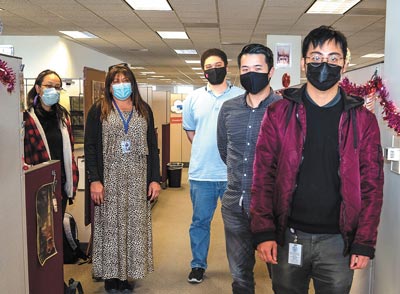
Ryan Norwall:
I want to mention that the team on this interview represents a larger team. There were members across all different areas of ITA, even the nontechnical areas, that helped out with things like the QA for the documentation.
Tuan Ngo: First off, I want to say that I’m really proud to be a part of this Tiger Team. With the timeframe that we had, the most challenging thing that we saw was how do we get our clients from home to get access to these systems remotely. Knowing that they would be working on their personal devices, we had to simplify things. The best solution was to develop the best user manual, the best user guide so that it’s simplified and easy for them to get access. This team is technical, but in the user guide we had to break it down to be more user friendly. The technical staff got together and wrote instructions for Windows, for Mac, for Android, for IOS devices, you name it. The instructions were reviewed by our Admin Service staff to see if they could actually follow them or if there was a way to revise them to make them more user friendly. Once the instructions were good to go, we uploaded them to Jayson Joseph’s Website.
Joyce Edson: For Tuan and Ly and the Desktop Group, they not only had to work with our users to get them remote and connected, they worked with ITA staff too. They were getting hit from both sides. They did a great job.
Tuan Ngo: Thank you, Joyce. We worked during the day and then, at night, I’d read the user manual to make sure it was okay, and then follow up on it the next day.
Ly Lam: It was very hectic for the first two weeks. We got the daily tickets coming in and then we got all the tickets coming in from Connect2LACity.org. My team and others were trying to say, “We need to find a way to explain to them an easier way how to access and differentiate between their home PC and the work PC that they’re trying to access to. We had 11-hour Google Meets.
Eleven months in, how is the system holding up?
Ryan Norwall: The system is working great. Since those first few weeks, when things were kind of crazy and we had all those ISP problems and things like that, we have not had a major issue that I can recall. The system is actually a really exciting piece of technology as well. It’s really customizable, so there are a lot of different things that we can do. It’s not the traditional VPN solution where it puts a user on the network; it kind of brokers from your home connection to whatever City resource you have. It’s not like an all-or-nothing type of platform, but granular access to certain things.
Daily we have about 6,000 users using the system on average. That number may seem a little low, but for things like accessing your City email, you don’t need to go through the system, so we don’t really see that in terms of traffic. We have about 18,000 at any time that could access it in terms of accounts ready to go, so that’s where we are. And it’s still easily scalable. If there comes a time when we need to grow that number even more, we don’t have to rebuild the system. We can just scale up at any moment’s notice.
Related Success
Very good. Let’s talk about success stories. Anything that strikes you as memorable?
Ryan Norwall: So one thing that comes to mind relates to Executive Order 29.
Joyce Edson: ED29 is basically contactless government. So the understanding is that COVID is a long-term issue. Even as we’re getting vaccinated now, there are still public health officials telling us that this is going to be a long-term issue. We feel that telecommuting is going to be ingrained as a way that the City does business now. There were some benefits that people found to telecommuting. Less traffic. It was probably the first and only time that I could make it from my house to Downtown in about 15 minutes. And better air quality. People were able to be home with their kids, although schooling is an issue. But ED29 says anything that the City can do digitally should be done digitally. We are also in a financial situation right now caused by the COVID crisis, so we’re scaling back. We’re losing staff. The City’s asking people to retire. So we need to do things more efficiently, so where we can digitize and make processes more automated so that humans are doing the things that only a human can do. We’re helping people digitize the processes that they had been doing manually. It’s been a blessing in disguise, not that we want to be happy that something like this hit the nation, but it has pushed digital abilities to the limit very quickly.
Jayson Joseph: For our team, the success story is really that the public didn’t realize anything changed. Despite the monumental shift in our workforce and how we work, our Website stayed up, Council meetings continued, we were still able to connect with our residents. That was a huge success story due to everyone in this group.
Strong point.
Ryan Norwall: Overwhelmingly, all the departments that I’ve talked to, they’ve been happy with the system. The whole work from home program has made it possible to digitize a lot of the services that Joyce was talking about. Those weren’t conversations that were happening much prior to COVID.
Are we a leader? Have any other cities looked at LA and the work that this team has done as a model for how to do it?
Joyce Edson: Actually yes. We fielded a lot of other government entities asking what we were doing, how did we handle that, validating what they were trying to do and also trying to get ideas about how to deal with some of the challenges that they had. LA is the second largest city in the nation, and we have become a digital government leader, so people ask us what we’re doing. That does happen quite a bit.
A Passion for Service
Here’s a different type of question – what do you love about what you do?
Ly Lam: I love what I do where I am right now. I’m able to provide our customers a tool that allows them to access all the applications from home and continue to do their work and provide whatever they are doing behind the scenes to get their things done. The customers I talk to are very grateful that we are able to give them that tool and provide the continuation of their daily work and their support. It’s really great to hear that. It makes me so happy just to see that.
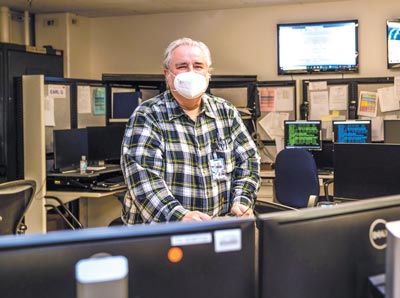
Eduardo Magos: I really believe that all of us, as civil servants, have a chance to directly impact the quality of life of Angelenos. I live in the City of LA. I’ve worked in many applications that the public uses, that I use, and my wife can report things through 311. Particularly during COVID and our work from home, I’ve been very proud to be involved in building things that my own neighbors can use. I really love being involved in that. That includes all the things we’ve done during COVID. We did systems for the elderly to get meals. We did rental assistance programs. We are helping to curtail the spread of COVID with the travel forms for quarantines, for COVID testing. We helped build systems for Disaster Service Workers, and every one of those systems benefits again the very community that I’m part of. There are so many places where sharp developers can work. The folks on this call here and the people we work with, they made choices, and they chose to work with the City out of a sense of really wanting to give back, sharing their talents in meaningful ways beyond just a paycheck. There are a lot of people who come to this job with that spirit, and I’m one of them.
Well said. Thanks everybody for talking to Alive! I love that to conduct this interview, we’re using the very system that you built. Thanks again.
Ryan Norwall: Thanks for telling these stories.
Nima Asgari: Thank you.

One of Many Projects
When Alive! asked ITA for a list of the department’s other projects during COVID, the list spanned more than 46 pages. Here are some of the highlights. (All dates mentioned are 2020.)
Organization
ITA began working with Emergency Preparedness Dept. to stay current on the upcoming pandemic.
(March 6)
Policy
ITA held emergency policy committee meetings to develop support steps. (March 13)
EOC Goes Virtual
ITA’s Emergency Operations Center goes virtual. (March 13)
Media Toolkit
ITA and the Mayor’s Office launch a kit of graphics, videos and other elements the media can use in covering the pandemic. (March 20)
Mayor Press Conferences
Channel 35 begins producing, streaming and broadcasting Mayor Eric Garcetti’s nightly news conferences. (March 20)
311 Call Center Ramps Up
City’s customer service outreach system develops answers for the hundreds of calls it gets about COVID, in addition to the regular 17,000 customer service inquiries. (March 20)
COVID Testing System
Over a weekend, ITA produced an evaluation, registration and scheduling system for testing Angelenos for COVID infection. (March 27)
Building Social Presence
ITA works with departments to strengthen their presence on social media to better convey current COVID information. (March 27)
Feeding the City’s Seniors
ITA’s Apps Bureau Staff works with the Dept. on Aging to modify its Senior Meals on Wheels tracking app to make sure the City’s seniors continue to receive the meals they depend on. (April 3)
Phishing Monitor
ITA’s Information Security Office works closely with federal and local partners in monitoring and sharing threat intelligence about online malicious schemes and attacks. (April 3)
Job Portal
ITA works with the Mayor’s Office to create an online job portal for COVID emergency workers. (April 3)
Chatbot Updated
The City’s chatbot, Chip, is updated with current COVID information. (April 10)
Logistics Tracking
ITA teams help launch a new Resource Request and Tracking System with the Emergency Management Dept. (April 10)
LAFD Sleeping Quarters
ITA works with the LAFD to expand on the Fire Dept.’s in-station sleeping quarters to accommodate more first responders.
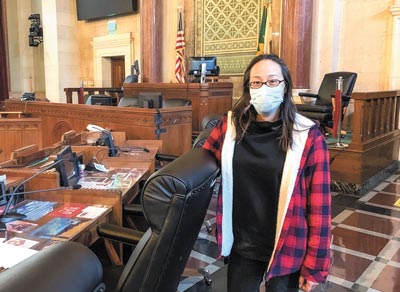
City Council Goes Virtual
ITA’s Council support team builds system for the City Council to meet virtually, continuing the City’s governance online. (March 27)
Digital Outdoor Billboards
LA CityView 35 partnered with the Emergency Management Dept to create digital outdoor billboards to enforce the safer at home decree (NotifyLA). (April 10)
Strengthening Housing Website
After the Housing Dept.’s Website crashed due to new COVID-related initiatives, ITA teams strengthened it. (April 17)
Fixing Broken LAPD Channels
After Spring showers damaged important LAPD communications channels, ITA’s CSD Base Maintenance Section diagnosed and repaired the system. (April 10)
Get Help
The Mayor’s Office of City Homeless Initiatives (MOCHI), Rec and Parks, and ITA launched Get Help, a new app that helps social workers and HOPE teams find services for homeless Angelenos. (April 24)
Enhanced Wi-Fi
ITA finished deploying a Wi-Fi kit designed and built at Piper Tech to create and enhance wireless communications supporting COVID-19 operations. (April 24)
Innovation Goes Virtual
ITA’s Team Innovate held its first Office Hours, hosting training through Google Meet and a LiveStream. (May 8)
Smart City
ITA staff produces SmartLA 2028, a plan to guide LA’s smart city rollout for the 2028 Los Angeles Olympics. (May 8)
Virtual Public Meetings
ITA’s support of public meetings goes beyond just the City Council, with adaptations for committee and commission meetings. (June 19)
Cyber Risk Portal
ITA’s Information Security Office launches a Cyber Portal to provide City departments with visibility of their vulnerabilities, prioritization of critical vulnerabilities, and which vulnerabilities have been remediated. (June 19)
CyberU
ITA assists Personnel in launching CyberU, a professional development platform featuring more than 1,700 courses. (July 3)
Fire Alerts
ITA assists the High Performance Wireless and Research Education Network (HPWREN) to install a network of fixed cameras and technology to send alerts to the LAFD to minimize damage due to wildfires. (July 10)
Resilience
ITA’s Policy Committee presented solution ideas to the Mayor’s Chief Resilience Officer to aid in the City’s Building Back Stronger recovery plan. (July 24)
Piper Tech Safety
ITA staff installs multiple improvements throughout Piper Tech, including safety signage and banners promoting face covering usage, and plexiglass at the inventory counters. (Aug. 14)
Radio Sterilization System
After researching the topic, ITA’s Gregory May found and installed a semi-medical sterilization cabinet at Piper Tech to help sanitize staff’s handheld radios. (Aug. 14)
Directive 29
ITA supports Mayor Garcetti’s Directive 29, which builds the City capabilities for contactless operations and digitalization of workflows. (Sept. 4)
Supporting Students
ITA partnered with Rec and Parks to provide Wi-Fi networks at 50 Rec and Parks sites to support the educational needs of students. (Sept. 4)
Fair Wage
ITA teams with Public Works/Contract Administration to build an app to oversee minimum wage compliance with vendors. (Sept. 11)
Traveler Forms
ITA’s Apps Bureau works with Airports and the Mayor’s Office to launch a COVID traveler’s form in advance of the Thanksgiving holiday, to monitor movements and curtail the spreading of the coronavirus. (Nov. 20)
Vaccinations at Dodger Stadium
ITA assists the Mayor’s Office in setting up the City’s mass vaccination site at Dodger Stadium, said to be one of the biggest mass sites in the country. (Jan. 11, 2021)
|
BEHIND THE SCENES
Club Director of Marketing Summy Lam photographs (from left) Ted Ross, General Manager, and Ryan Norwall, Information Systems Manager, in ITA’s Data Center. Ted and Ryan are Club Members. |


